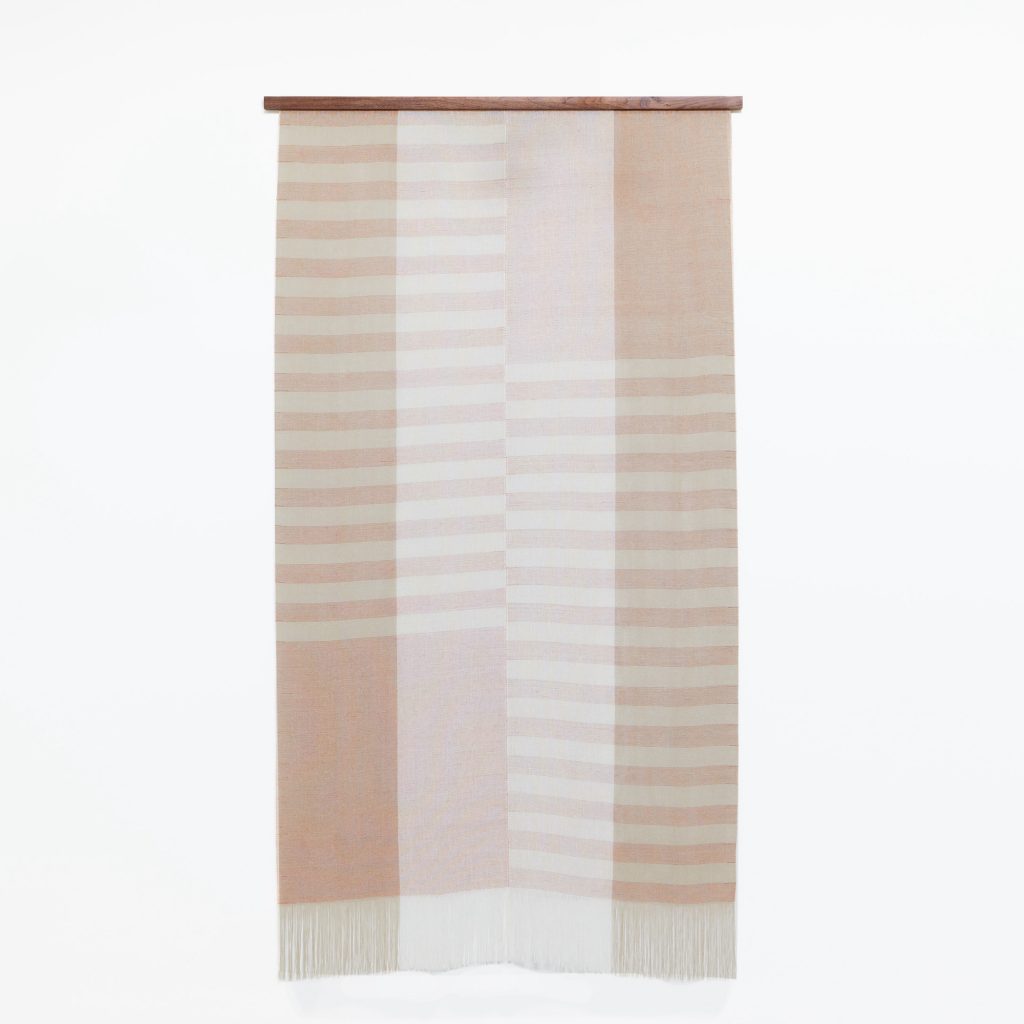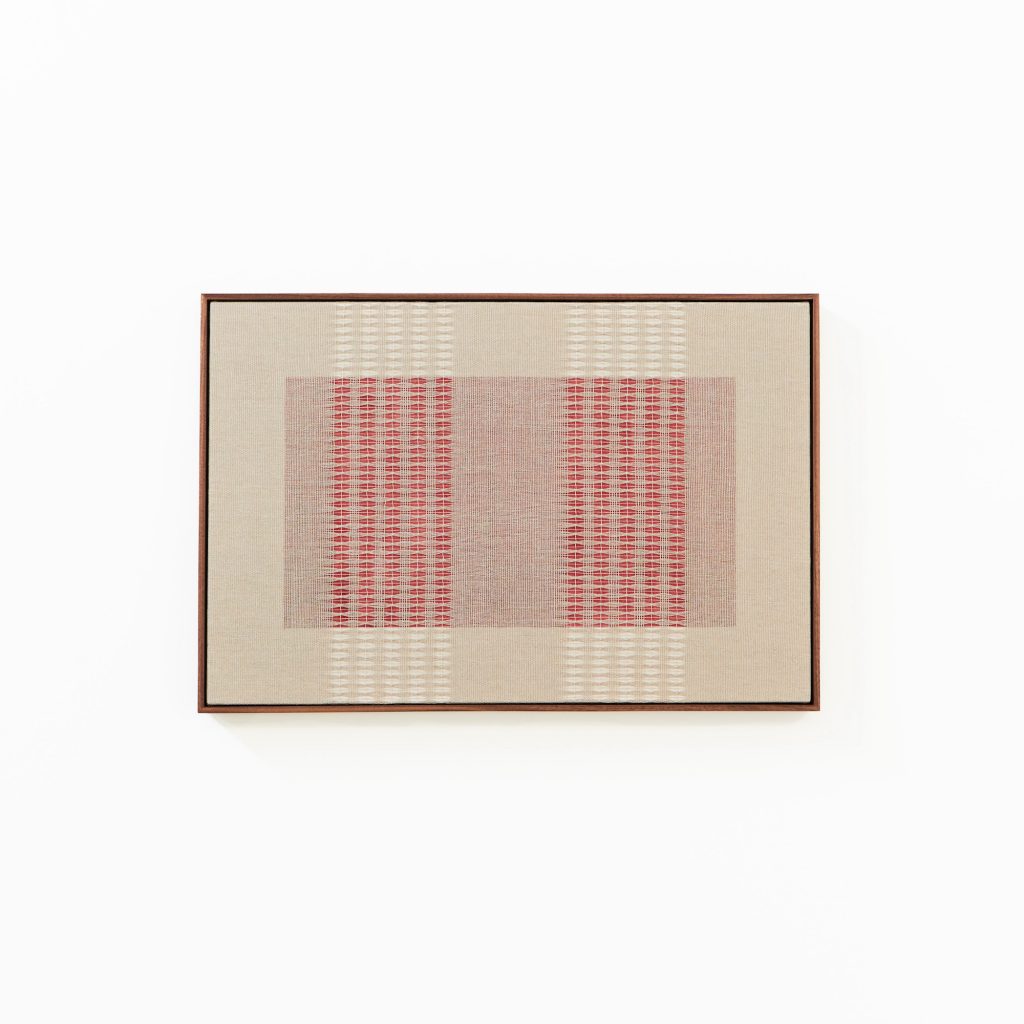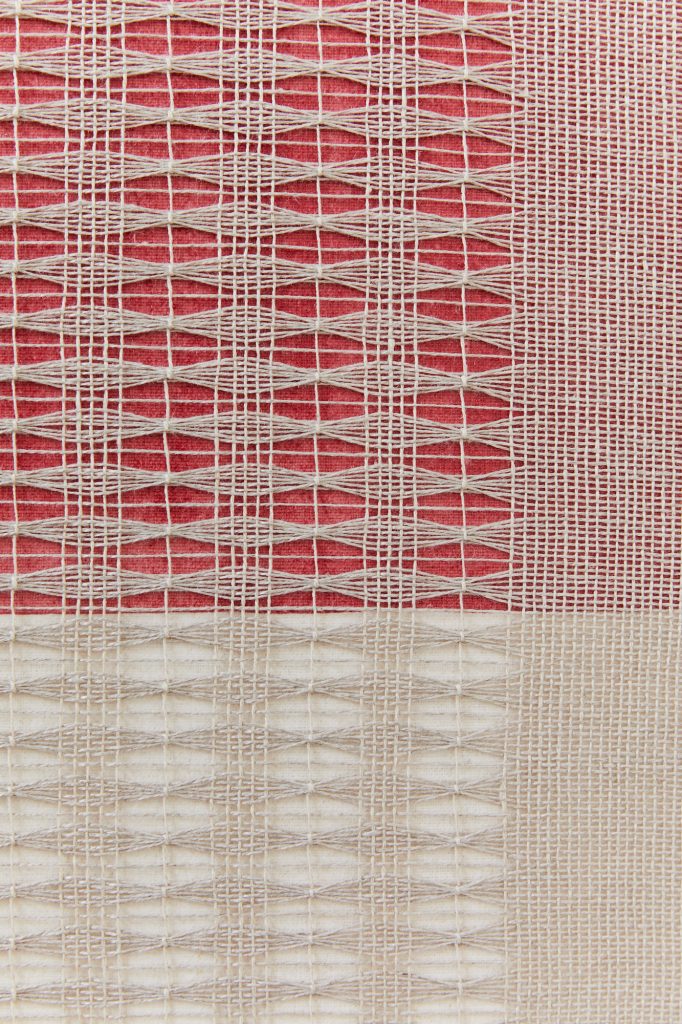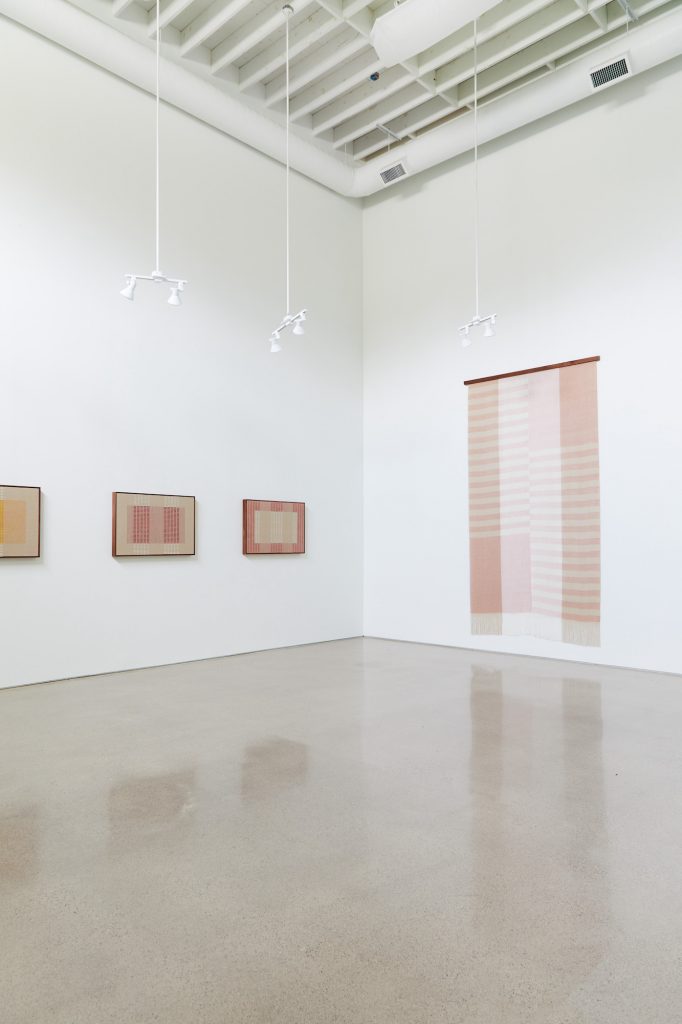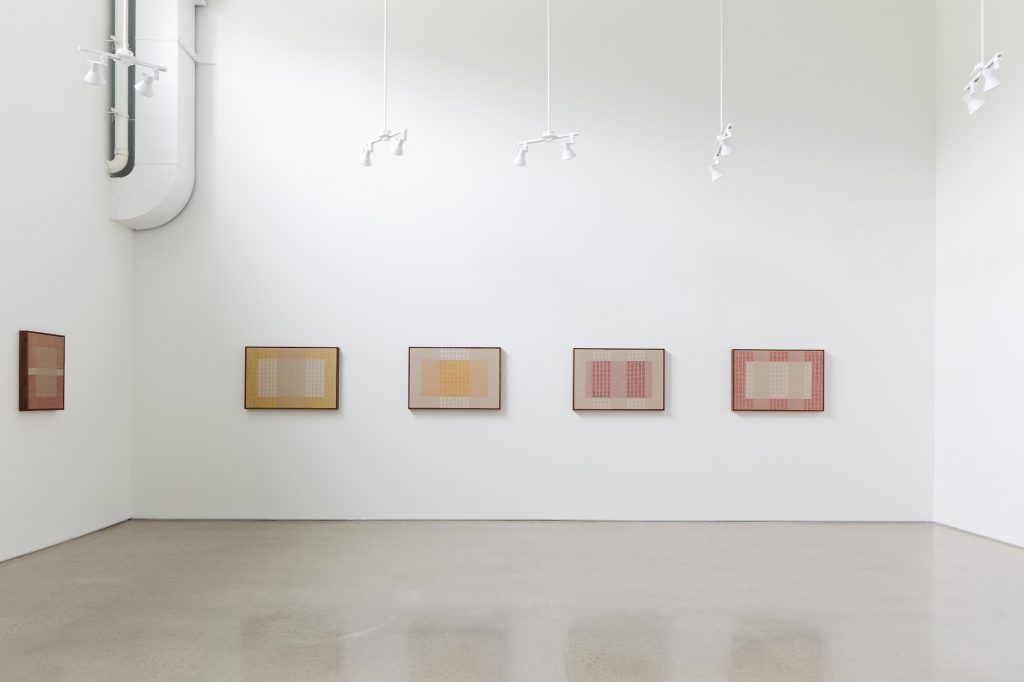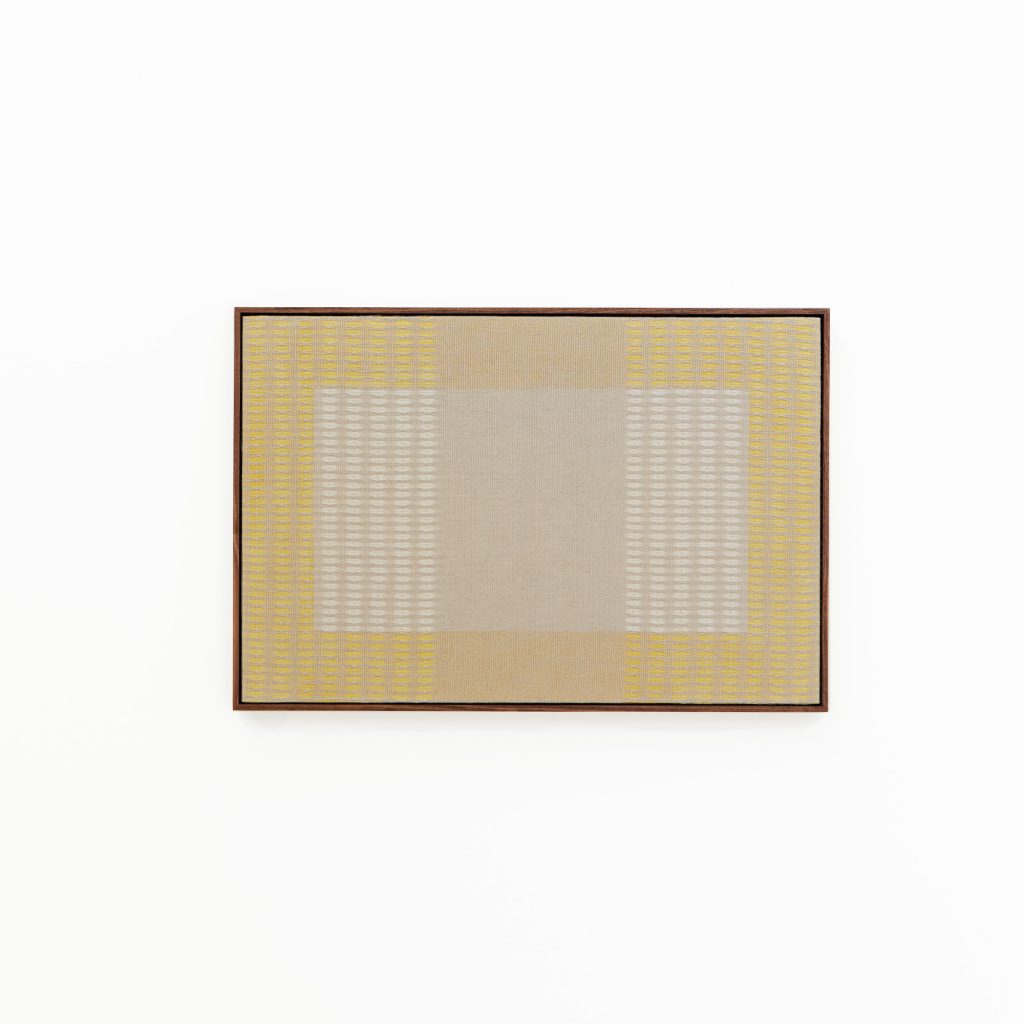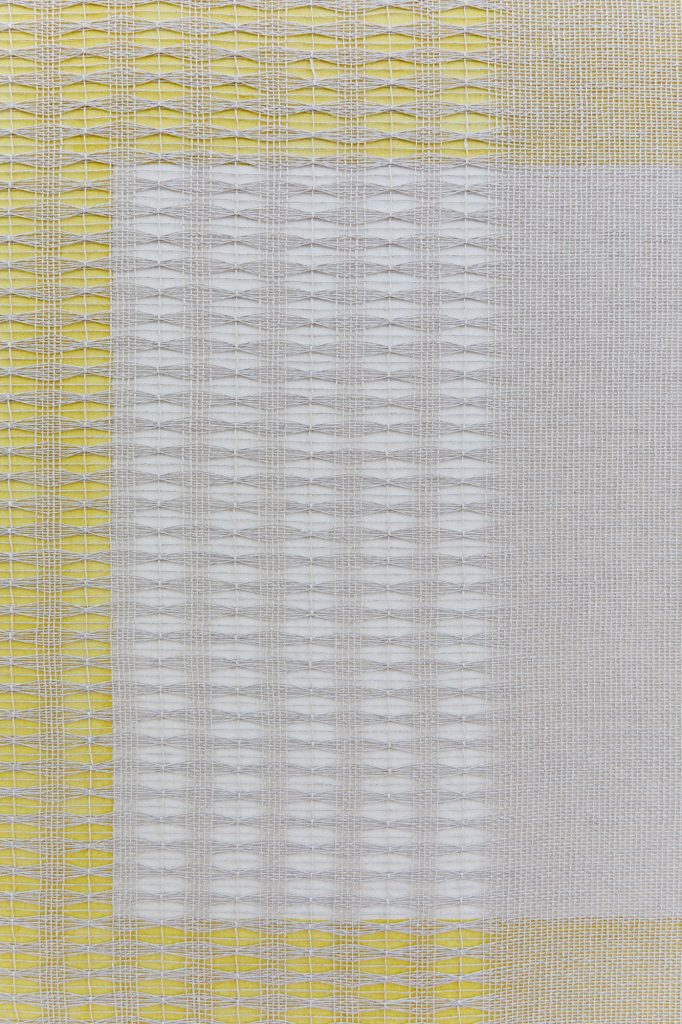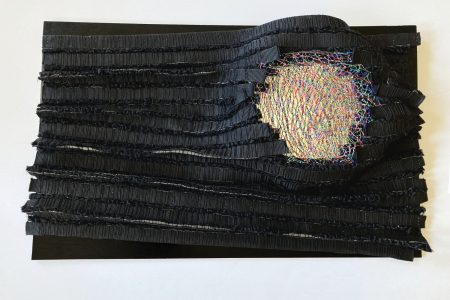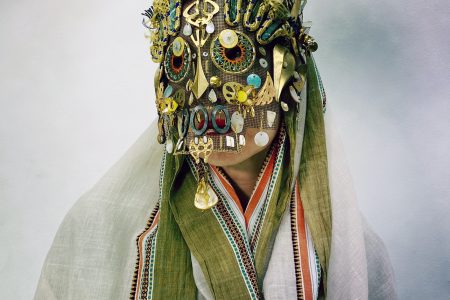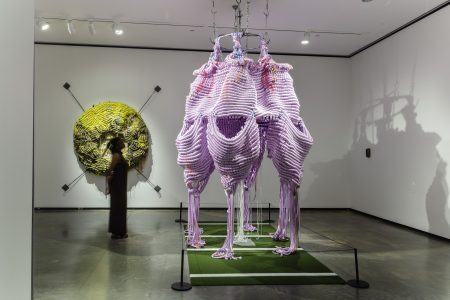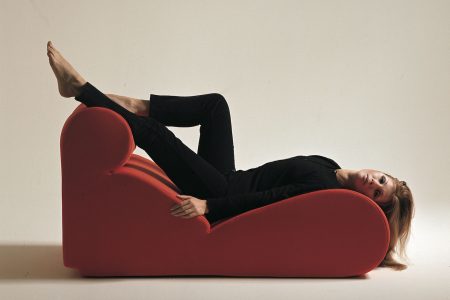Around the Grid: Rachel Duvall’s Geometric Weavings
For 15-years, textile artist, Rachel Duvall, has worked on her intricate and complex weavings, which explore the tension between structure and the handmade. TLmag spoke to the artist about her practice.
Los Angeles based textile artist, Rachel Duvall, uses warp and weft to create minimalist, geometric weavings often in soft, muted tones such as beige, yellow, pink, or cream. The simplicity of the forms, however, belies the complex and rigorous process that goes into every piece. Duvall hand dyes much of the linen fibre she uses in her weavings and makes numerous preparatory sketches before the weaving process even begins. There is a painterly quality to her weavings and a tension between the structure of the grid and the softness of fibre and the handmade. She recently launched a new series of work titled “Off the Grid,” which stemmed from a 2-month long residency at the Josef & Anni and Albers Foundation in Connecticut.
TLmag: Why fibre? How did this traditional medium and material become your focus of studies and eventual artistic career?
Rachel Duvall: I didn’t know that I was going to end up working in fibre when I was in school, but once I took one class working on a floor loom I was hooked. The meditative practice of weaving really called to me. I love lining up all the threads and planning out the piece to then come out the other side with this flexible material. I really enjoy the balance between the inherent softness of a textile and its measured beginnings.
TLmag: Weaving is a medium that demands patience and time. What’s a typical day like in your studio? Do you work on multiple pieces at once or one at a time?
R.D.: Weaving is a rather lengthy process with different stages, so a typical day in the studio really depends where I am at on a piece. Some days that might mean making sketches, dyeing linen, measuring out a new warp for the loom, or weaving. When I dye material, I might dye enough for a series of works, but when I start weaving on the loom I concentrate on one piece at a time.
TLmag: When you begin a new piece, are you sketching out ideas or is it more conceptual in approach?
R.D.: My works are very process oriented; I make my sketches planning out the piece to the inch and keep everything rectilinear on the grid. This sketch or plan then lets me measure out how much dyed material I need and how long and wide my warp should be; all of these calculations are done before the piece even gets onto the loom. Once the piece is hand woven it takes on its own flexibility and character of a textile. Variation in the dye, texture and openness of the weave create a nuance that I hope catches the viewer’s eye and draws them in.
TLmag: The colour tones in your work are very subtle and soft. I’ve read you often dye your own yarns?
R.D.: I use primarily linen in my works, and natural dyes for my colour palette. Some of these I source and others I hand dye myself. I really love the natural palette that comes from botanical dyes, they all work so well together. Hand dyeing also allows me to control the colour even more and make tonal shifts within the same dye vat. Recently I have been using a lot of madder root and cochineal.
TLmag: How was your experience as an artist-in-residence at the Josef & Anni Albers Foundation? I imagine their work resonates very strongly with you in its connection with the grid and in terms of colour?
R.D.: It was a wonderful experience to be an artist-in-residence at the Josef & Anni Albers Foundation. I got to take a break from my regular practice and try new techniques in my work. I started layering paintings behind my weavings while I was there, which I’ve been expanding on since. Anni and Josef’s work had already been a huge influence on my practice, being able to see and explore the archive really inspired me to push new ideas and experiment.
TLmag: How do think LA influences you as an artist?
R.D.: I don’t know if LA influences my work in a direct way, but it does make working outside in my dye kitchen year-round much more enjoyable!
TLmag: Are there any upcoming projects you can tell us about?
R.D.: Not that I can speak about at the moment, but there are exciting things in the works for 2022.
rachel-duvall.com
@rachelduvall
All photos courtesy of Rachel Duvall
